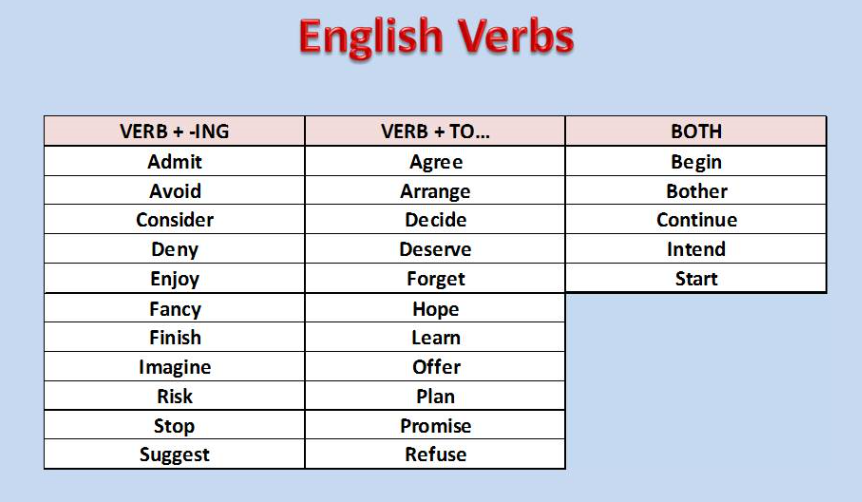
小學的英文老師可能曾告訴學生一句英文句子内不可以擁有超過兩個動詞,但其實這個陳述不盡不實,因為只要在同一句子内的第二個動詞變化一下就符合英語文法規律。有時我們可以把第二個動詞改為“ing”形式或在兩個動詞之間加入“to”就可以了,什麽時候是“ing”?而什麽情況加入“to”?完成以下英文練習題你會有更深入明白。
Jimmy often avoids ______ housework.
錯了!
“avoid”後不會是“to+動詞“的,應以改用”ing“形式。
On holidays we often go ________.
錯了!
去參與某種活動不是”to+動詞“,應該使用”ing“方式,如”go swimming“。”to“只會與名詞”camp“一起使用,如:I'm going to a summer camp next year.
They enjoy _______ movies at the weekend.
錯了!
“enjoy”後的動詞要用“ing”形式。
I'm looking forward to _____ you.
錯了!
“look forward to”後必定是“ing”形式動詞,或者直接跟著名詞,例如:I'm looking forward to the concert.
I don't mind _______ your questions.
錯了!
動詞“mind”後是跟著“ing"形式的動詞或者一個名詞,例如:I like winter. I don't mind the cold. 但當”mind“是一個名詞的話,我們可以之後運用“to+動詞”,例如:I made up my mind to enter the competition.
On Sundays, we go _______.
錯了!
如上述題目所解釋,我們應該以”go+V-ing“形式表示參與某活動。
Please spend 10 minutes ______ your essay.
錯了!
“spend”後必定是“ing”形式的動詞。
She decided ________ some soup.
錯了!
“decide”後一定是“to+動詞”形式。
Let them _____ home.
錯了!
“let”後直接用動詞即可,而且該動詞必定是現在式的。
His parents make him _____ hard.
錯了!
“make”後直接用動詞即可,而且該動詞必定是現在式的。
There's no danger; he need not ______.
錯了!
首先,使用“need not”時,這個“need“在任何情況下都不用加”s“,而且後直接用動詞即可,該動詞亦必定是現在式的。但這與”do not need“的使用不同,”do not need“後要跟著”to+動詞“,例如:There's no danger; he doesn't need to worry.
